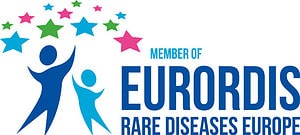Energy Management
MitochondrialRelated to the mitochondria. diseases are a varied group of disorders characterized by impaired energy production. With Mito, body systems can work intermittently and sometimes body systems don’t work at all.

Energy is part of life. We often don’t pay much attention to the energy we use, until it is gone. One big snow storm or lightning storm with power outages quickly reminds us of how essential energy is to our entire beings.
Having a mitochondrial disorder is like a permanent brown out. Systems work but intermittently and sometimes not at all. In fact, some systems become so devoid of energy that they begin to show signs of failure.
Mitochondrial disease patients experience a variety of symptoms which can change rapidly throughout the day. Symptoms may be vague or specific, invisible to others or quite easy to identify, and mild or severe. Figuring out your pattern of symptoms and what triggers those symptoms will give you a better sense of control and help you take steps to get the energy level back to baseline quicker. As a parent, understanding your child’s mito baseline is key to keeping your child healthy and anticipating problems as early as possible.
Energy In = Energy Out
Everyone has a baseline – that comfortable place our bodies function well at. An individual’s baseline is really a balance between conserving energy (rest), using energy (activities), and making energy (nutrition and hydration). To work well, our bodies need to make and be provided enough energy to account for all activities – normal body functions as well as any exertion during the day with work, school and fun. In other words, Energy In = Energy Out!
Any change in this equation from baseline requires modifications. Energy drains, such as illness, weather extremes, life stresses, etc., require extra energy or a body will not meet energy demands and symptoms will develop. This is true for all people, with or without mitochondrial disorders, and exactly why most people feel tired when they come down with a flu or bad cold.
Patients with mitochondrial disorders experience a more profound effect from energy drains because of their defect in energy production and usage. These patients to not make energy well and do not use energy effectively either! Consider old cars vs. new cars. New cars are very energy efficient compared to old cars. Old cars, however, can be tuned to work just fine when one understands how best to fuel it and pace it. Living with a mitochondrial disorder is essentially like using a car with an energy inefficient system. As a parent of a child with Mito, better understanding your child’s energy system will help you to keep your child’s body run as well as it can and catch and treat problems early.
Understanding Mitochondria
Every cell in the body has mitochondria except Red Blood Cells. Mitochondria are the body’s energy factories and batteries and energy is required for life..
Normally functioning mitochondria make energy and help allocate energy to each cell. Our cells then work in concert to complete the jobs our body needs done. In a sense, our body is one big energy factory, and the mitochondria are the workers.
We make energy with nutrition and rest. Foods, nutritional supplements, vitamins, and hydration all provide the building blocks necessary to make the fuel our body needs.
The process of converting food and oxygen (fuel) into energy requires hundreds of chemical reactions, and each chemical reaction must run almost perfectly in order to have a continuous supply of energy. When one or more components of these chemical reactions does not run perfectly, there is an energy crisis, and the cells cannot function normally. As a result, the incompletely burned food might accumulate as poison inside the body.
One way to conserve energy is by resting. Sleep helps recharge our batteries, and pacing activities during the day helps keep extreme draining at bay and builds in a buffer for us to remake some energy. Staying healthy is also important, as is good preventive care.
Another important way to conserve energy is to keep both physical and emotional stress within limits as much as possible. Life bring stress and there is no way to avoid it all. Pure joy at a wedding or birthday party can be an energy drain, but people with mito should live life and not avoid the good stressors. Plan according with extra rest and good hydration and nutrition to help rebalance your energy. Exercise can be good for mitochondria, but activities well beyond your baseline will drain your energy bucket and cause negative symptoms such as pain, fatigueThe overall feeling of tiredness or lack of energy. It is not the same as simply feeling drowsy or sleepy. Being fatigued means having no motivation or energy., and even signs of organ dysfunction if severe. The most common energy drains include:
- Physical exertion: daily activities and extras such as sports
- Negative moods: anxiety and depressionIt is a mood disorder that causes a persistent feeling of sadness and loss of interest.
- Hyperactivity
- Ambient temperature extremes
- Infections
Respecting these energy drains helps to maximize energy conservation and use.
Your ACTION Plan: Know your Baseline
All have a unique baseline of how we make and use energy and function. This baseline changes for all over time but these change occur more dramatically for children with mito, especially when very young. Your baseline is specific for you, and changes from that baseline are typically predictable after you discover your energy drains and ways to restore energy reserves.
The “Big 5” Baseline Features
Baseline Features to monitor include:
- Skin color
- Basic vital signs (heart rate, respiratory rate and pattern, blood pressure and temperature)
- Overall energy and alertness
- GastrointestinalGI function
- Behavior and appearance
You can turn these Big 5 Baseline Features into a simple checklist that can make a vague, difficult to grasp disorder start to become a bit more concrete and easier to understand and organize. By tracking these features daily, typically morning and night, you will become very well attuned to yourself or your child and learn patterns of features that indicate when you or your child is having a “good” day or a “bad” day. You will learn what patterns of features are reassuring and what features are worrisome. And you will have the salient information at your fingertips to provide to healthcare providers should medical attention be required. In essence, tracking the Big 5 Baseline Features becomes your key to understanding yourself or your child and knowing when to intervene.
Have an ACTION Plan
“Every action requires an equal and opposite reaction.” Who would have thought that we’d be applying Newton’s Third Law of Motion to our bodies? The goal is to keep the body’s energy bucket filled quicker than the losses can occur. Plan ahead for big activities and be creative when thinking.
Learn more about Managing Your Energy in our Day-to-Day with Mito tips.










